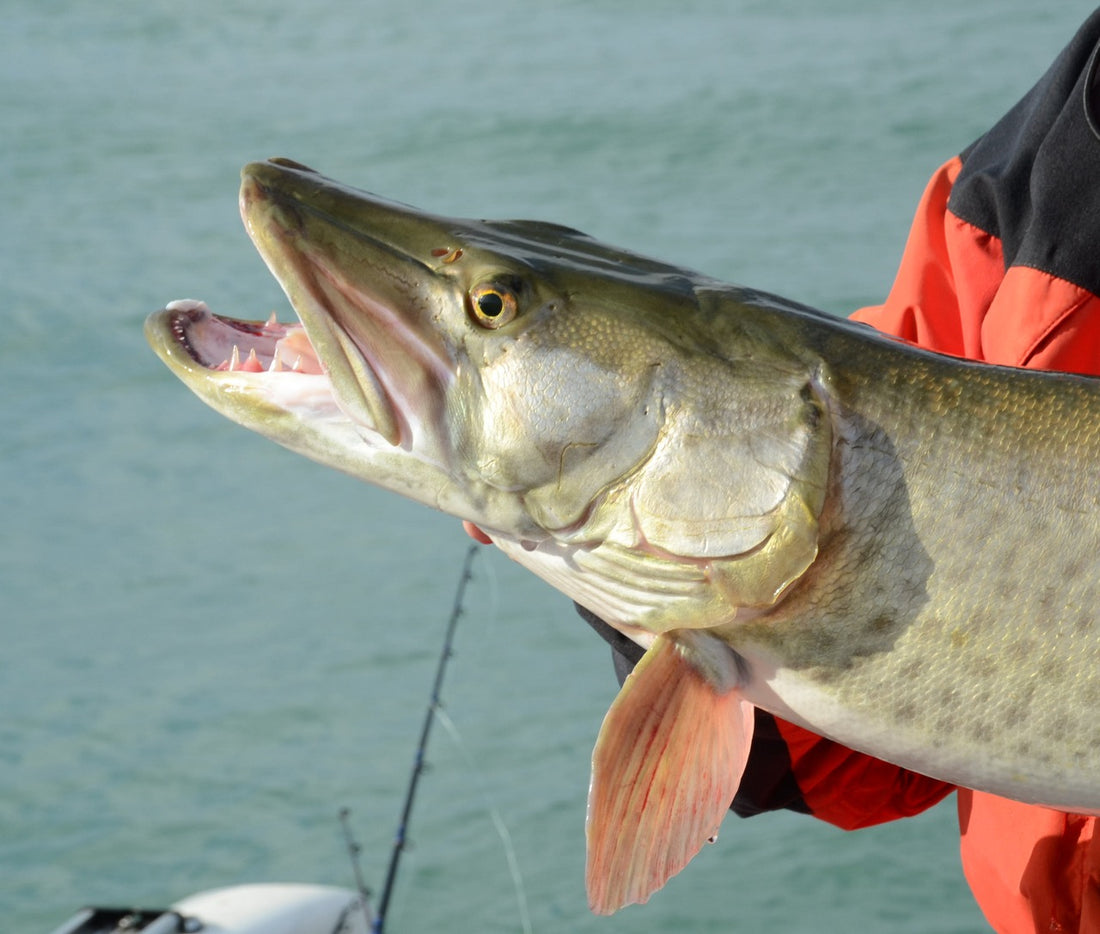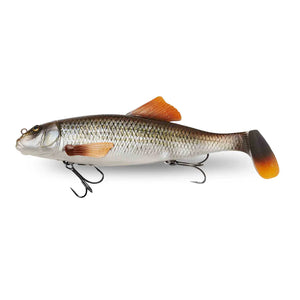Whether you know them as muskellunges, muskies, maskinonges, lunges, or “the fish of 10,000 casts,” the Esox masquinongy is a freshwater species renowned amongst anglers for their large size and notoriously elusive nature.
This freshwater species is the Holy Grail of many angler fishers, who see a large catch as a trophy in the sport.
Musky fishing is luckily a popular pastime in Ontario thanks to the region’s many fishing spots that specialize in muskies.
Learn how to maximize your chances of catching one with our guide to catching musky in Ontario.
What Does A Musky Look Like?
On top of its aggressive demeanor, the musky’s physical features reflect its role in nature as an ambush predator. The dorsal fins located far back on its elongated body and visible teeth are a clear sign of a musky. Skin color can range from gray and silver to brown, and some even have spots and stripes.
You can expect most muskies you catch to be between 2 and 4 feet long and weigh between 15 and 30 pounds. If you’re lucky, some catches can be as large as 50 pounds.
Muskies come in a few subspecies:
- The Chautauqua Muskellunge, or the Barred Muskellunge, lives in various places across North America, namely Lake Ontario, the St. Lawrence River, and the titular Chautauqua Lake.
- The Clear Muskellunge makes its home around northwest Ontario and southeast Manitoba. Some live down south around Wisconsin.
- The Spotted Muskellunge, also known as the Great Lakes Muskellunge, resides near the Great Lakes basin and has slanted spots across its body.
- The Tiger Muskellunge is an artificial hybrid between the muskie and the northern pike. Breeders sometimes produce tigers specifically for angler fishing.
Just don’t confuse the muskellunge for the northern pike, a similar species. Northern pikes tend to have darker bodies with lighter markings. Muskies also have 7 or more sensory pores under their jaws, while a northern pike will have fewer. But the most obvious difference is the tail fin: musky fins converge to a sharp point, while northern pikes have more rounded fins.
Where Do I Look For Muskies?
Ontario-based anglers are in luck. Colder water can hold more dissolved oxygen than warmer water, and muskies are oxygen-sensitive fish. You’re likely to find them swimming around Canadian waters for this reason.
What Season?
Most anglers catch the largest muskies around the fall and early spring during the fishes’ feeding season prior to winter. Just don’t try to fish during the winter, when musky catches slow down, or when your local season closes.
What Time?
In terms of the time of day, you want to aim for dusk or dawn during the warmer months. If you fish during colder seasons, aim for mid-afternoon.
What Conditions?
Muskies tend to feed before a cold front arrives, so start fishing in warmer weather. Cloudy or overcast days are ideal. You also want to fish near clear to stained waters, where muskies like to reside.
Where in Ontario?
Ontario is actually home to three of the most popular muskie fishing spots in the world. Look to Lake St. Clair, the Georgian Bay, and the St. Lawrence River. We’re also seeing the Niagara River rise as a popular muskie spot.
What’s the Best Fishing Gear For Catching Muskies?
Don’t worry about catching these guys. According to the International Union for Conservation of Nature (IUCN), these fish are rated “least-concern species” thanks to their high populations in the wild.
Since muskies are aggressive predators, you want to use heavy tackle and a heavy-action casting rod. Choose a 50 to 100-pound braided line, and a heavy fluorocarbon or wire leader, so that the fish’s sharp teeth don’t cut through it. Musky reels should be the freshwater baitcasting type.
You have several options for musky lures, with the most popular ones being:
- Bucktail spinners
- Jerkbaits
- Large topwater lures
- Minnow-style plugs
- Surface plugs
- Large Plastic Swimbaits
Minnow plugs, in particular, work when you’re fishing around weeds and other submerged vegetation. You also want to bring varying colors of lures depending on the fishing conditions. Fishing in clear water calls for natural colors, while brighter or darker hues are preferable to help the lures stand out in murkier waters.
Fun Facts About the Muskellunge
In addition to being the largest member of the Esocidae pike family, the muskellunge probably has one of the most interesting names of any fish. Its current name “muskellunge” comes from an Algonquian language known as Ojibwe, though English actually had over 94 different names for the species in the past.
There’s even a mystery surrounding the scientific name “Esox masquinongy.” A physician in New York supposedly discovered the species and published the name in an 1824 paper, but no copies have ever emerged. And it doesn’t help that many scientists have confused the muskie with its similar brethren, the northern pike.
Another colloquial, tongue-in-cheek name is the “fish of 10,000 casts.” Thanks to the fish’s reputation as an apex predator in the wild, getting one to choose your bait is a tough but rewarding challenge.
Shop For Musky Gear at Angling Sports Today and Catch Your First Musky
The muskellunge is such a popular catch that many consider it a rite of passage for the enthusiast angler. Ontario happens to be the perfect location, too, with its many premier musky fishing spots. You don’t have to go far to add this freshwater species to your angling record.
Excited to hit the shore for some musky fishing? Get all your shopping done in one go with Angling Sports’s musky fishing collection. We have everything an angler needs from musky rods to baitcasting reels, so shop online or in-store today.







